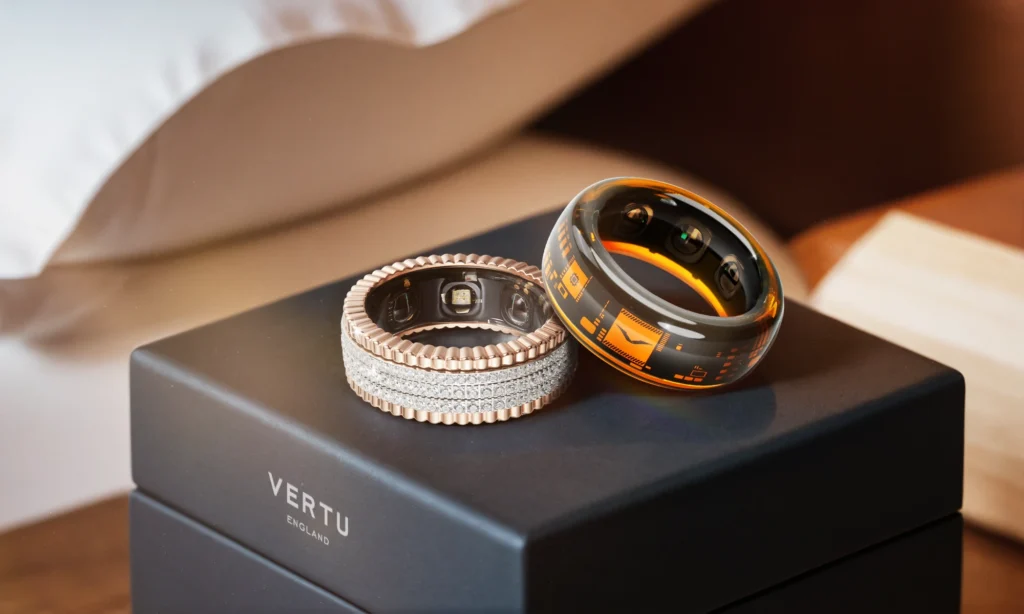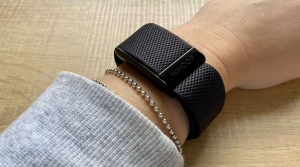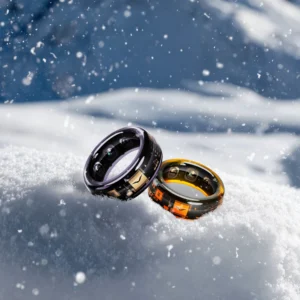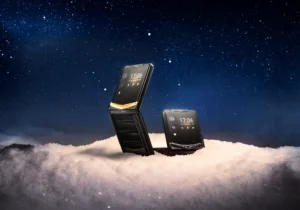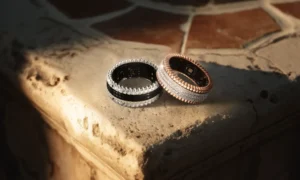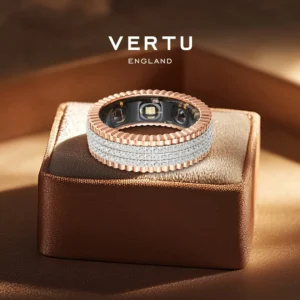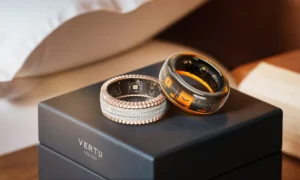In a world where tradition meets innovation, the Comparison of Diamond Ring and Smart Ring has become an intriguing topic. For anyone looking to make a significant purchase – be it for an engagement, a personal treat, or a leap into wearable tech – understanding the nuances of these two distinct categories is crucial. This comprehensive guide will illuminate the core differences, explore their unique benefits, and help you decide which ring is right for your lifestyle.
What are the Core Concepts of a Diamond Ring and a Smart Ring?
A Diamond Ring is a timeless piece of jewelry, primarily valued for its aesthetic beauty, symbolic meaning (often representing love and commitment), and intrinsic material worth. Its core concepts revolve around craftsmanship, gemology (the 4 Cs: Cut, Color, Clarity, Carat), and personal expression through design and precious metals. Conversely, a Smart Ring is a piece of wearable technology, often designed with a minimalist aesthetic, whose core concepts are rooted in functionality and connectivity. It integrates sensors, Bluetooth, and sometimes NFC technology to provide a range of digital features, transforming a traditional accessory into a miniature computer for your finger.
What is the Important Terminology When Discussing Diamond Rings?
When discussing Diamond Rings, key terminology includes the “4 Cs”: Cut (how well the diamond is proportioned), Color (ranging from D-Z, colorless to light yellow), Clarity (the absence of inclusions and blemishes), and Carat (the weight of the diamond). Other important terms are Setting (e.g., solitaire, halo, pave), Metal Type (e.g., gold, platinum), Certification (e.g., GIA, AGS for authenticity and grading), and Conflict-Free (ethical sourcing). Understanding these terms is vital for assessing a diamond's quality and value.
What are the Important Terminology When Discussing Smart Rings?
For Smart Rings, essential terminology includes Sensors (e.g., heart rate, SpO2, temperature), Connectivity (usually Bluetooth, sometimes NFC), Battery Life (measured in days, often recharged wirelessly), Companion App (the software on your phone that displays data), Water Resistance (e.g., ATM ratings for swimming), and Biometric Data (health metrics collected by the ring). Understanding these terms helps in evaluating a smart ring's technological capabilities and how it integrates into your digital life.
What are the Basic Principles Guiding the Value of Diamond Rings?
The basic principles guiding the value of Diamond Rings are a blend of rarity, artistry, and market demand. The rarity of high-quality diamonds, combined with the skilled craftsmanship involved in cutting, polishing, and setting them, contributes significantly to their cost. Emotional and cultural significance also plays a huge role; a diamond ring is often seen as an investment in a moment, a memory, or a future. Its value is generally stable and can appreciate over time, though influenced by market trends and individual characteristics.
What are the Basic Principles Guiding the Functionality of Smart Rings?
The basic principles guiding the functionality of Smart Rings are miniaturization, data collection, and seamless integration with your digital ecosystem. These devices are designed to be unobtrusive while continuously collecting biometric data and providing notifications or control features. Their value is derived from convenience, actionable insights into health and wellness, and the ability to perform tasks without needing to constantly pull out your smartphone. The principles emphasize utility, user experience, and the continuous evolution of features through software updates.
What are the Implementation Steps for Acquiring and Utilizing a Diamond Ring?
Acquiring a Diamond Ring involves several key implementation steps. First, research and education on the 4 Cs and different styles. Second, setting a budget. Third, visiting reputable jewelers to view options and potentially design a custom piece. Fourth, verifying certification for authenticity. Finally, the “utilization” of a diamond ring is primarily about wearing and enjoying it, ensuring proper care (cleaning, maintenance), and often insuring it to protect your investment.
What are the Implementation Steps for Acquiring and Utilizing a Smart Ring?
The implementation steps for acquiring and utilizing a Smart Ring are distinctly different. First, research different brands and models based on desired features (health tracking, payments, notifications) and compatibility with your smartphone. Second, determine your correct ring size, as smart rings often have specific sizing guides. Third, purchase the device. Fourth, download and set up the companion app on your smartphone. Fifth, pair the ring via Bluetooth. Finally, wear the ring consistently for accurate data collection and regularly charge it according to manufacturer instructions. Ongoing utilization involves reviewing your data in the app and updating the ring's firmware as new features are released.
What are the Best Practices for Caring for a Diamond Ring?
Best practices for caring for a Diamond Ring ensure its longevity and sparkle. This includes regular professional cleaning (typically once a year) and at-home cleaning using mild soap and a soft brush. It's advisable to remove your ring during strenuous activities (e.g., gardening, exercise, cleaning with harsh chemicals) to prevent damage or loss. Store it separately from other jewelry to avoid scratches. Regularly check the setting for any loose prongs to prevent the diamond from falling out. Investing in jewelry insurance is also a wise best practice.
What are the Best Practices for Maximizing the Benefits of a Smart Ring?
To maximize the benefits of a Smart Ring, several best practices are recommended. Wear the ring consistently, ideally 24/7 (if comfortable and battery allows), for the most accurate and comprehensive data collection. Keep the companion app updated to access the latest features and bug fixes. Regularly review your data (sleep, activity, heart rate) to gain insights into your health and wellness trends. Ensure the ring is properly charged to avoid data gaps. Finally, sync the ring with other health apps if possible, to create a holistic view of your health data.
What are Common Challenges with Diamond Rings?
Common challenges associated with Diamond Rings include their high initial cost, which can be a significant financial investment. There's also the challenge of maintaining their sparkle and ensuring the stone remains secure in its setting over time. Risk of loss or theft is a constant concern, making insurance a crucial consideration. Additionally, differentiating between real and fake diamonds, or understanding the nuances of diamond quality without expert knowledge, can be challenging for consumers.
What are Common Challenges with Smart Rings?
Common challenges with Smart Rings often revolve around their nascent technology. Battery life can be a concern, requiring frequent recharging. Accuracy of sensors can vary between devices and might not always match medical-grade equipment. Sizing can be tricky, as an ill-fitting ring can affect both comfort and sensor performance. Limited screen functionality means you often still need your phone for detailed information. Finally, rapid technological obsolescence means a smart ring might feel outdated in just a few years, unlike a timeless diamond ring.
What are the Key Benefits of Owning a Diamond Ring?
The key benefits of owning a Diamond Ring are multifaceted. Primarily, it offers enduring symbolic value, often representing love, commitment, and significant life milestones. It's a tangible asset with potential for long-term value retention. Diamond rings provide aesthetic beauty and elegance, enhancing personal style. They are also heirlooms, capable of being passed down through generations, carrying family history and sentiment. Lastly, a diamond ring offers a sense of luxury and personal indulgence.
What are the Key Benefits of Owning a Smart Ring?
The key benefits of owning a Smart Ring center on convenience, health insights, and discreet functionality. They offer continuous health tracking (heart rate, sleep, activity, temperature) without the bulk of a smartwatch. Smart rings provide discreet notifications and sometimes payment capabilities, allowing you to stay connected without constantly checking your phone. They can offer actionable insights into your wellness, helping you optimize sleep and activity. Their minimalist design appeals to those who prefer subtle tech or don't want to wear a watch.
What are the Measurable Results of Utilizing a Smart Ring for Health Tracking?
Utilizing a Smart Ring for health tracking can yield several measurable results. Users can observe improved sleep quality scores (e.g., deeper sleep, fewer disturbances) over time by adjusting habits based on ring data. They can track increased daily activity levels (steps, calories burned) and work towards fitness goals. Monitoring heart rate variability (HRV) can provide insights into stress levels and recovery. Consistent tracking allows users to identify trends in their biometric data, helping them understand the impact of lifestyle choices on their overall well-being.
What are the Success Indicators of a Well-Chosen Diamond Ring?
The success indicators of a well-chosen Diamond Ring are primarily personal and emotional. These include the recipient's delight and appreciation, indicating that the ring resonates with their taste and symbolizes its intended meaning. The ring should feel comfortable and secure for daily wear. Its enduring beauty and sparkle over years of wear are also key indicators. Finally, if the ring becomes a cherished family heirloom, loved and passed down through generations, it clearly signifies a successful and meaningful choice.
Conclusion
The Comparison of Diamond Ring and Smart Ring reveals two distinct yet equally compelling categories of personal adornment. While one offers timeless elegance and profound symbolism, the other provides cutting-edge functionality and invaluable insights into your digital and physical well-being. Mastering this knowledge empowers you to make an informed decision that perfectly aligns with your values, lifestyle, and aspirations. Whether you prioritize enduring beauty or smart capabilities, both rings offer unique paths to personal enrichment.
Frequently Asked Questions (FAQ)
Q1: Can a Smart Ring replace a Diamond Ring for an engagement?
A1: While a Smart Ring offers advanced features, it typically doesn't carry the same traditional symbolic weight as a Diamond Ring for engagements. Most people still prefer a traditional diamond for its timeless beauty and representation of commitment. However, a smart ring could be a unique and modern “second” ring or a gift for a tech-enthusiast partner.
Q2: Which type of ring is a better investment?
A2: A Diamond Ring, particularly a high-quality, certified one, is generally considered a better long-term investment due to its intrinsic material value and rarity. Smart Rings, like most technology, are subject to rapid obsolescence and depreciation in value over time.
Q3: Are Smart Rings safe to wear all the time, particularly for health tracking?
A3: Most Smart Rings are designed for continuous wear, often including during sleep. They use low-power Bluetooth and their sensors are generally considered safe. However, individuals with specific health conditions or allergies to certain materials should consult with their doctor before prolonged use.
Q4: How does the maintenance differ between the two types of rings?
A4: Diamond Rings require periodic cleaning and occasional professional checks for loose settings. Smart Rings require regular charging, software updates, and cleaning to maintain sensor accuracy. Their electronic components mean they can't be exposed to the same harsh conditions as a traditional diamond ring.
Recommended For:
-
Diamond Rings: Individuals seeking a classic symbol of love and commitment, those who appreciate fine jewelry and craftsmanship, anyone looking for a timeless heirloom, or those considering a significant emotional and material investment.
-
Smart Rings: Tech enthusiasts, health and fitness conscious individuals, minimalists who prefer discreet wearables, people looking for convenient notifications or payment options, or anyone seeking actionable insights into their sleep and activity patterns.

